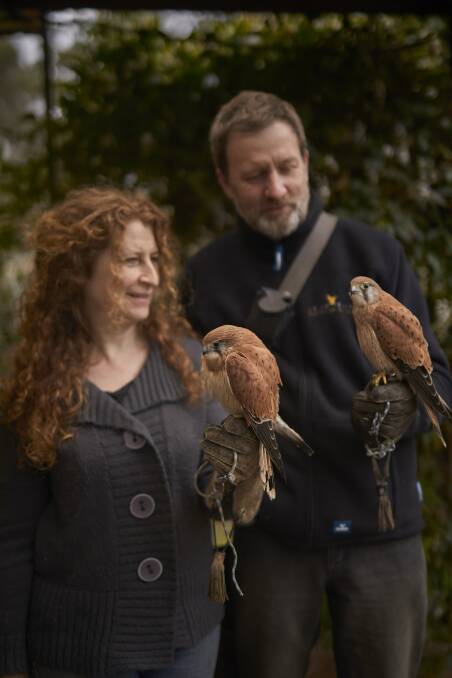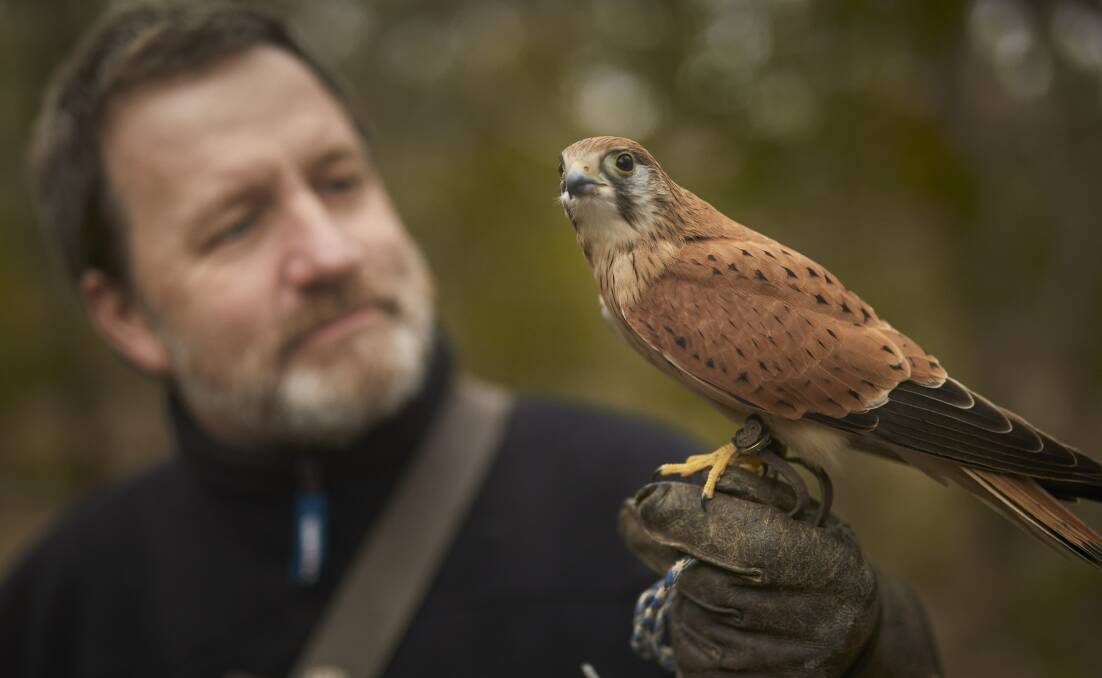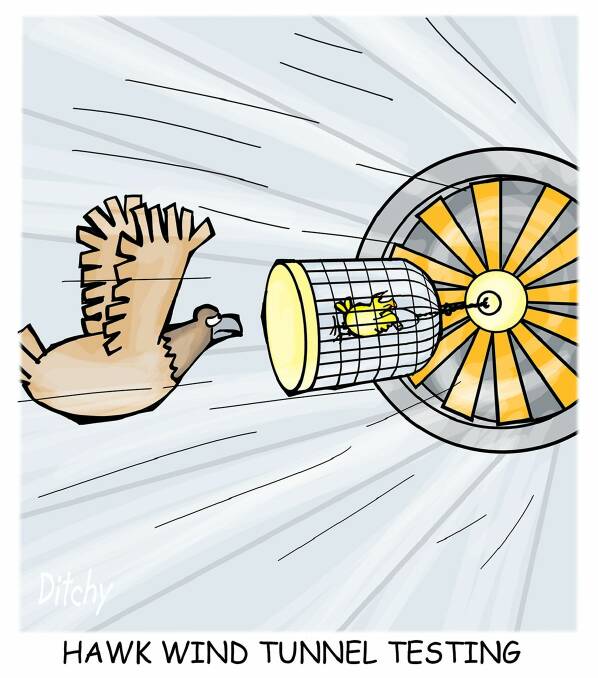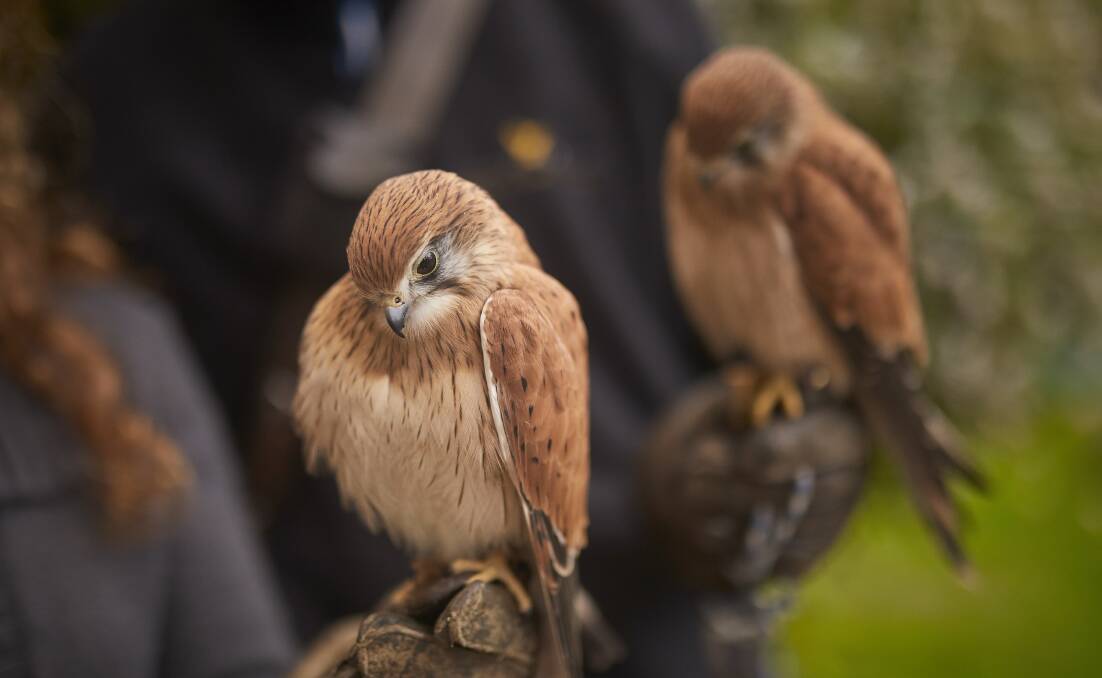
A pair of Nankeen kestrels from Ballarat are lending the secrets of nature to aerospace engineers looking to improve the stability of drones.
Subscribe now for unlimited access.
or signup to continue reading
Martin Scuffins, who runs Leigh Valley Hawk and Owl Sanctuary, and his kestrels Jedda and Kevy, are taking part in wind tunnel testing for an RMIT research study on how the birds maintain stability in gusty winds, particularly while hovering.
Researchers hope to use the kestrel’s stability secrets in developing small autonomous aircraft and drones that can remain stable in gusty winds.
“My job is to get my kestrel to hover in the wind tunnel for the purpose of their research, to look at how kestrels handle gusty conditions because they’re the masters of hovering,” Mr Scuffins said.

He will make the more than 300km round trip to RMIT’s Bundoora wind tunnel laboratory at least 10 times as the birds are tested in different wind conditions.
“The two birds I’m using are both highly trained and used for education. They do school shows, outdoor free flight shows so for them whether it’s an indoor venue or outside in the wind they’re pretty adaptable so the wind tunnel isn’t too much of a challenge,” Mr Scuffins said.
“The only challenge is that flying downwind is difficult for them so we have two handlers, one at end end of the wind tunnel, to the bird flies in to wind, hovers and the data is captured, then the second handler carries it downwind.”
Nankeen kestrels are a common sight throughout the Ballarat region, hovering above grasslands as they use their incredible eyesight to find large invertebrates and small vertebrates like mice, grasshoppers, crickets, lizards and small birds.
“Birds can provide biological inspiration towards improved stability in a range of atmospheric winds. In addition, it is my hope that the study will increase our understanding of the biology of these amazing birds,” Mr Scuffins said.
The kestrels, which weigh about 170g to 200g, are fitted with motion tracking markers on their wings, head and tail. Thirteen motion tracking cameras in the wind tunnel capture the bird’s movements and use software to generate a 3D model of the flight.

It is believed to be the first time that bird flight has been studied in wind tunnels in Australia.
Project lead Dayna Foote said the research was her fourth year aerospace engineering honours project.
“We are looking at gust mitigation technology and how to improve that for drones and micro air vehicles,” she said.

“Kestrels already hover quite well, and they are around the same weight category as micro air vehicles, so if we can figure out how kestrels hover we can improve the stability of these drones and improve everyone’s enjoyment of them.”
Have you signed up to The Courier's daily newsletter and breaking news emails? You can register below and make sure you are up to date with everything that's happening in Ballarat.













